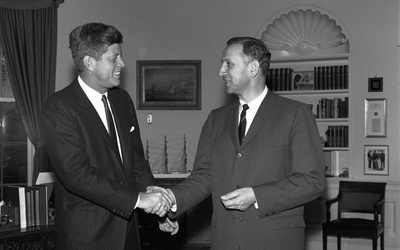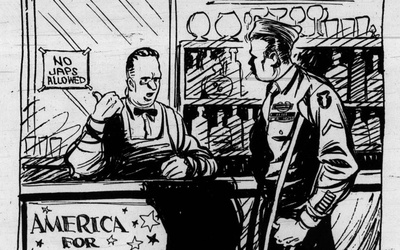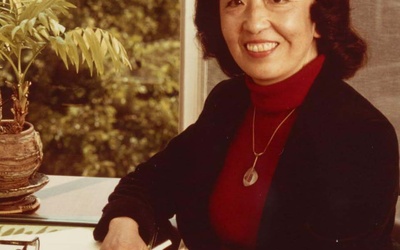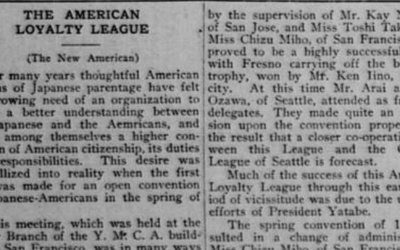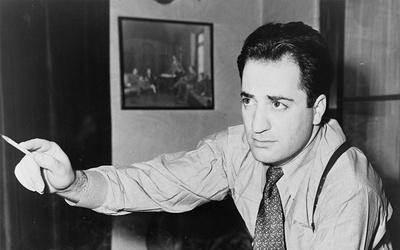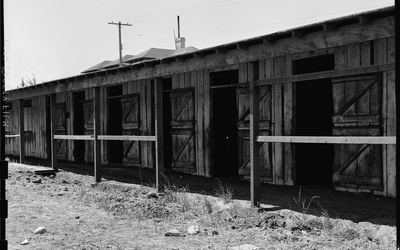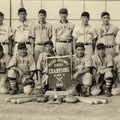
Jonathan van Harmelen
@jonathanJonathan van Harmelen is currently a Ph.D student in history at UC Santa Cruz specializing in the history of Japanese-American incarceration. He holds a BA in history and French from Pomona College and an MA from Georgetown University. He can be reached at jvanharm@ucsc.edu.
Updated February 2020
Stories from This Author
Our Man on the Hill: Sidney Yates — Part 2
Feb. 21, 2023 • Jonathan van Harmelen
Read Part 1 >> In January 1952, Masaoka again approached Yates for a private bill. Unlike the other cases, here Masaoka pleaded Yates to help a war husband. The case involved Yoshiko Joy Okamoto, a translator working for the U.S. Air Force in Japan. Okamoto, born in New York City, had been stranded in Japan during World War II, during which time she met Toshio Tsuzuki. Although Okamoto was initially stripped of her U.S citizenship because she had lived in Japan …
Our Man on the Hill: Sidney Yates — Part 1
Feb. 20, 2023 • Jonathan van Harmelen
The wartime incarceration of Japanese Americans resulted in thousands of former inmates migrating throughout the United States. Among the cities to welcome resettlers leaving camp, Chicago received the most. By the end of the war, over twenty thousand Japanese Americans called Chicago home, making it the second-largest Japanese American community in the United States. Although the exodus of Japanese Americans to Chicago was significantly smaller than the Great Migrations of African Americans from the South during the early 20th century, …
Bill Mauldin – An Artist with a Cause
Feb. 10, 2023 • Jonathan van Harmelen
Few artists captured the wartime experiences of American GIs like Bill Mauldin. One of the most prolific cartoonists of the mid-20th century, Mauldin chronicled the stories of American soldiers across the European Theater of Operation, capturing their everyday struggles and instilling humor amidst the horrors of war. Mauldin then took up work as a political cartoonist after the war, and consistently focused on the causes of everyday individuals and those facing unjust persecution. Some of the earliest examples of his …
Joe Oishi’s Nursery and The Promised Year
Jan. 23, 2023 • Jonathan van Harmelen
In October 2022, during a trip to Berkeley, California to do research at the Bancroft Library, I stopped in at Eastwind Books. Normally, when I go book shopping, I usually look for copies of older works that are either out of print or unavailable online. Sometimes, by good fortune, I find a book that I have always wanted to read but never was able to purchase online. As I rummaged through the dollar cart at Eastwind, I pulled out a …
Dr. T.T. Yatabe, the American Loyalty League, and the Birth of the JACL
Jan. 9, 2023 • Jonathan van Harmelen
Today, the Japanese American Citizens League (JACL) is the largest Japanese American community organization in the United States. Founded in 1929, the organization has evolved over the course of the 20th century from a small group of community leaders to a national civil rights organization with chapters across the U.S. Yet before the JACL existed, Issei and Nisei community leaders in several West Coast cities formed local political organizations to demonstrate the loyalty of the Japanese community to the U.S. In …
Father Francis Caffrey – A Priest for the Stars and Students Alike
Dec. 26, 2022 • Jonathan van Harmelen
In my previous columns on Maryknoll clergy, I profiled several noteworthy priests and nuns who assisted Japanese Americans during their wartime incarceration. The vast majority of these clergy worked in Los Angeles, where the largest Japanese American enclave in the United States existed until 1942. While most priests worked solely with the Japanese communities, several priests reached out to the greater community in Los Angeles. One such priest, Father Francis J. Caffrey, who served at the San Juan Bautista mission …
Remembering Roger Daniels—A Reflection
Dec. 16, 2022 • Jonathan van Harmelen
Last Saturday, I was saddened to learn of the passing of the esteemed historian Roger Daniels at 95 years old. To say that Daniels helped shape Japanese American history would be a real understatement. Over the course of his five-decade career as a historian at UCLA and the University of Cincinnati (among others), Daniels wrote or edited dozens of books relating to Japanese Americans and to their World War II incarceration. Many of his works, such as his provocatively-titled Concentration Camps …
William Saroyan and the search for "The Japanese American Novel"
Dec. 12, 2022 • Jonathan van Harmelen
Normally, when we think about “California” cities, our minds tend to drift to popular destinations such as Los Angeles, San Francisco, or San Diego. Often absent from the list of locations noted as part of the “cultural heartland” of California are the cities and towns that dot the landscape from the Central Valley up to the San Joaquin Delta. This long network of settlements nestled within inland California is often seen as the last outpost before the East, and its …
Horse Stall Housing, Spoiled Ham, and Other Stories of Life in Tanforan - Part 2
Dec. 5, 2022 • Brian Niiya , Jonathan van Harmelen
Read Part 1 >> Nisei Collegians Given its urban population and proximity to Bay Area colleges, it is likely that there was a higher concentration of college students at Tanforan than at most other “assembly centers.” Though most were not immediately able to continue their education, there were a few who were able to leave Tanforan to attend college—and thus avoid going to a WRA concentration camp—often with the assistance of the National Japanese American Student Relocation Council, which formed at …
Horse Stall Housing, Spoiled Ham, and Other Stories of Life in Tanforan - Part 1
Dec. 4, 2022 • Brian Niiya , Jonathan van Harmelen
The second largest of the so-called “assembly centers” with a peak population of 7,816, Tanforan was built on the site of the Tanforan Racetrack in San Bruno, California, near the present site of the San Francisco International Airport. Its inmate population arrived in late April and early May 1942, and came almost entirely from the San Francisco Bay area and was thus among the most urban of the short-term camps. Essentially the entire inmate population was transferred to the Topaz, …

